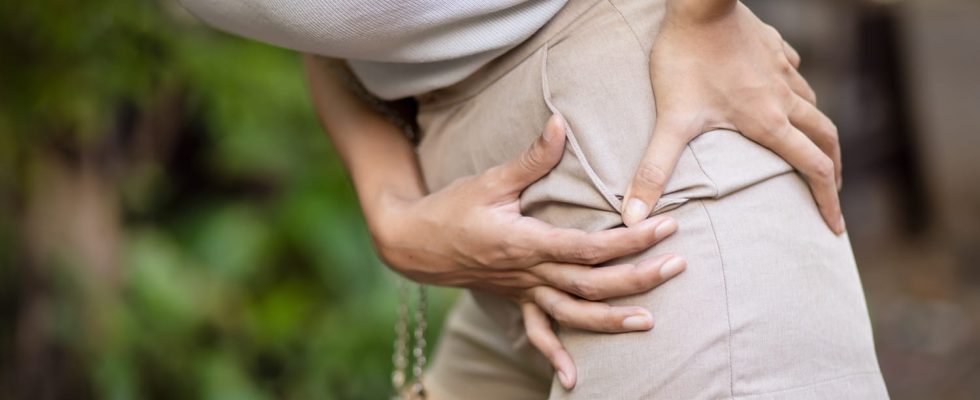Pain that doesn’t go away, stiffness… We don’t always think about it before the age of 50, but osteoarthritis can start earlier. Identifying the symptoms of osteoarthritis when you are young helps slow the progression.
Osteoarthritis, a disease of “old people” ? No way. “Many young people suffer from osteoarthritis and they must be treated so that they do not get worse themselves” explains Dr Odile Picard-Paix, general practitioner, oligotherapist and author of the book “Osteoarthritis at 40, how to avoid it, how to treat it” (editions du Rocher). Until 50 years ago, osteoarthritis was effectively placed in the category of diseases of aging “but this definition has been repositioned taking into account the fact that it can also affect young people” continues our interlocutor. Not that there are more young people with osteoarthritis today than yesterday but because it is important not to leave them wandering in the face of symptoms they don’t understand. Exactly, what are the signs suggestive of early osteoarthritis ?
1. Pain that does not go away despite rest
“Pain represents the first warning sign in young people with osteoarthritis” notes Dr. Picard-Paix. At the beginning, it is a discomfort that comes, that comes or a moderate pain during physical activity which fades. But over time “the pain no longer passes, it is no longer fleeting, it does not give in more or less to rest, it sets in and it is more and more necessary to take painkillers to get relief.” explains the specialist.
2. Pain that also begins to occur at night
After taking painkillers, an improvement in pain is generally observed, prompting a return to sport, gardening, etc. But this only lasts for a short time because the treatments are less and less effective. The pain then sometimes begins to appear at night. “The occurrence of night pain means thatan inflammatory reaction is added to the simple usual osteoarthritis symptoms” explains the specialist, while osteoarthritis is not initially an inflammatory disease. It is therefore an additional sign of seriousness.
3. Stiffness and complicated “rusting”
It’s a misleading symptom because stiffness, when you are young, is often associated with a muscular origin. A big workout the day beforeunusual movements… and we think that it is normal to have difficulty getting up from the sofa, from your bed the next morning or even from your office chair, after having been seated there for several hours. “In reality, two types of stiffness coexist: there stiffness of purely joint origin linked to osteoarthritis and muscle stiffness linked to contractures” distinguishes Dr. Picard-Paix. In case of osteoarthritis, “stiffness is associated with a complicated rust removal time, from a few seconds to a few minutes”.
It becomes difficult to turn your head: cervical spondylosis?
Stiffness and mobility problems do not go away over time. It is becoming more and more difficult to leaning forward (lumbar osteoarthritis) to turn the head (cervical osteoarthritis), to climbing stairs (knee osteoarthritis), of walk for a long time (hip or knee osteoarthritis).
4. A real reduction in physical performance
A young person who suffers from osteoarthritis notices a reduction in their physical performance: “She feels less capable, can no longer tinker like before, garden or even work. At this stage, theoretically, she will consult because the disability becomes too painful” explains the doctor. However, often this consultation is late: “The patient’s dissatisfaction can evolve into a rejection of symptoms, real denial. Our patients often tell us, “I thought it would go away on its own.”
What to do ?
First of all consult the attending physician. If the diagnosis of osteoarthritis is confirmed (by x-rays), he will give several tips to reduce the symptoms:
- take painkillers
- use anti-inflammatory gels,
- reduce your activities a little,
- do physiotherapy sessions
- administer corticosteroid infiltrations (in case of very acute pain with a significant inflammatory reaction)
He can also contact a rheumatologist. However “this will not always have the therapeutic approach in the perspective of a basic treatment. Osteoarthritis will be controlled but not always treated” explains Dr. Odile Picard-Paix. For her, “therapeutic effectiveness is linked to the joint use of basic drug and non-medication treatments“.
“We must continue to be active”
Among these treatments:
- trace elements (copper, sulfur, manganese, selenium, silicon),
- chondroprotective drugs (glucosamine, chondroitin),
- herbal medicine,
- homeopathy
- thermal cures.
These alternative medicines “have to be associated with prescribed allopathic treatments without interrupting them systematically, nor modify them” she specifies. To benefit from it, you must consult an oligotherapist, homeopath or phytotherapist. In parallel “you must continue to be active while adapting your activity (physical, personal and professional, editor’s note) with a lot of kindness and lucidity”. By implementing these valuable tips, “we can suspend the osteoarthritic process or at best, slow it down”.
